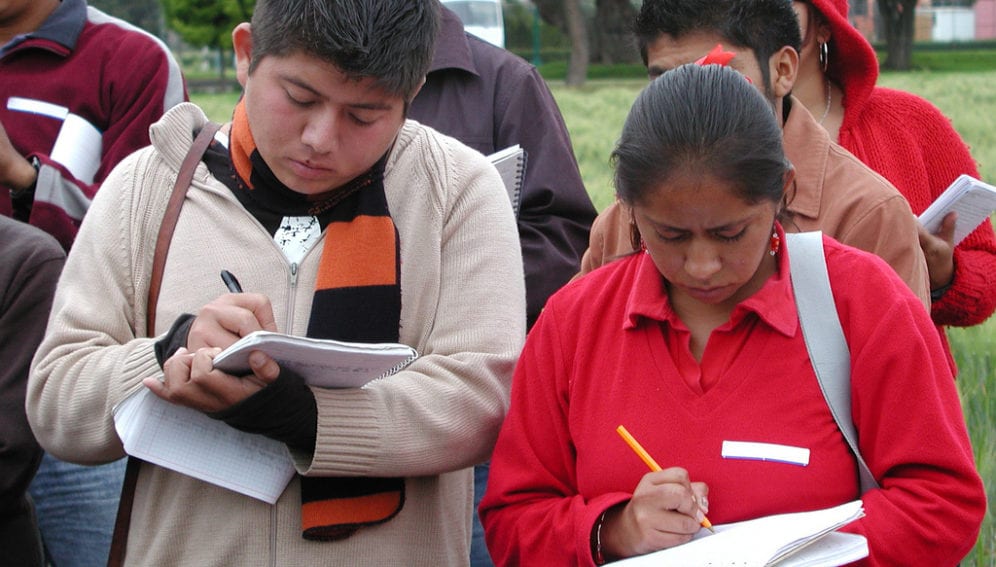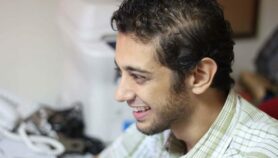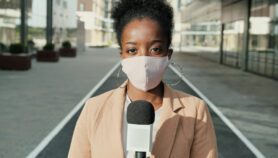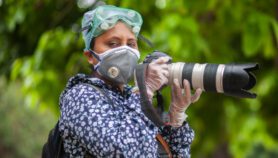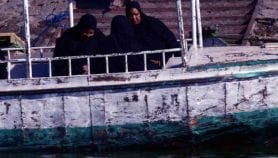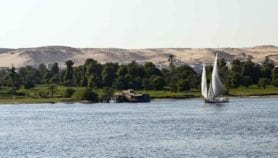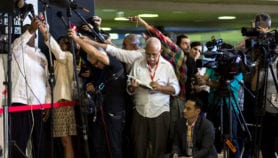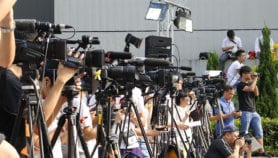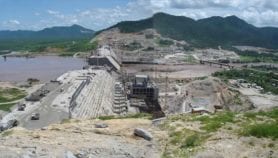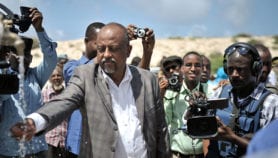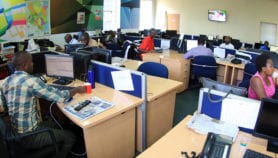By: Tan Shiow Chin
Send to a friend
The details you provide on this page will not be used to send unsolicited email, and will not be sold to a 3rd party. See privacy policy.
Journalist Tan Shiow Chin shares tips for getting the best out of visits to scientists in their natural habitats.
Field trips are a crucial — and exciting — aspect of science journalism. They let you see where science is done, whether in a laboratory at your local university, an international research institute or even on scientists' field trips and projects.
Such visits can be invaluable, not only to gather stories and multimedia material, but also to expand your network of expert contacts, get a feel for what influences scientists behind the scenes and increase your general scientific knowledge.
So how to get the most out of a trip? This guide will provide tips for visits out of the office, from the all-important preparation to when to ask those tricky questions. Use it alongside Reporting from science conferences for guidance when you're not chained to your desk.
Covering the costs
You might organise your own visit to a research centre or laboratory, or your media outlet may have funds. You could also negotiate that a freelance client pays for travel expenses within a commission.
On occasion, you may be offered a paid-for field trip to visit research institutions or companies. Discuss with your editor whether it is ethical to accept such a trip, and whether you should declare how your trip was funded in any subsequent coverage.
An organisation offering funded trips will have messages it wants you to take home, but remember you are under no obligation to communicate these, or even write up a story.
Setting the agenda
If you organise a trip, you will decide the agenda and will likely know the interviews and material you're after. But when an organisation or company organises the trip, they usually determine the itinerary and agenda.
So request the full itinerary before you take up the offer. Know exactly what they intend to show you, and if possible, who will be available for interview: it helps you prepare.
Trips like these — especially for groups of journalists — are often filled with presentations, site visits, and/or interviews, leaving little time to pursue your own story. So be prepared with some background reading. An Internet search will give the main researchers, their topics, and any obviously interesting angles.
I also usually search my newspaper's archives so that I do not repeat an angle; and so that I can follow up any interesting developments from previous stories.
Having your story idea and background information will guide your information-gathering. And remember that whoever arranged the trip, one of the most useful things you can prepare is an initial list of questions, and ideas for photographs and/or videos. It helps ensure you don't forget, or waste opportunities.
If you're on a group trip but really want to develop a different story idea, or interview someone who isn't on the itinerary, ask whether the organiser can make separate arrangements for you.
Even if you can't do the extra interviews on the day, don't consider the trip wasted. You will have made the necessary contacts to get the material.
Be prepared to go through all sorts of terrain during a field trip
Tan Shiow Chin
Preparing your gear
It's essential to prepare your equipment. You may have prepared mentally, but even skilled short-handers might struggle without a working audio recorder, and broadcast journalists have no material if their equipment fails.
Obviously you need notebooks, pens and/or pencils (remember, pens can run dry, but pencils write under any conditions). Fast typists could consider a laptop or a tablet. But that is not crucial, unless you have to file stories from the field, or need storage space for videos or photographs.
Print and web journalists should take a recorder if they have one, to ensure accuracy. Broadcast journalists will need their video camera, microphones, and lights. Consider taking back-up equipment if possible, particularly for longer trips. Some people take broadcast-quality equipment for formal material and use smartphones to gather material on the fly (such footage is increasingly acceptable to media outlets).
Even print and online journalists should take a camera, if possible with a video function. As a print journalist, I prefer to take my own photographs. But I also ask if an official photographer will be taking photos, or if photographs can be provided afterwards. The answer is usually yes, which means I can concentrate more on taking notes than on photography.
Always take extra batteries and memory cards, and don't forget your various chargers, particularly for overnight trips. For overseas trips, check that the voltage will suit your equipment, and remember your universal adaptor.
Also take note of the weather. Batteries run down faster in cold weather, while humidity, rain or sand might damage unprotected electronic equipment. And always ensure that you are properly equipped with clothes, backpacks etc.
Are you fit enough? On a visit to a remote highland village in Indonesia, I was expected to hike up and down steep slopes to get to the project site.
And finally, don't forget plenty of business cards with your contact details on them, to give to the people you meet.
On the day
During the trip itself, be observant, keep your mind open and participate.
A key advantage to interviewing someone in person is seeing their personality and expressions. You can pick up on areas they feel strongly about, and take your interview in new or unexpected directions.



Interviewing someone in person allows you to see their personality and passions
Tan Shiow Chin
Look around the office or laboratory, and note down any distinctive or interesting touches (inspirational quotes, funny posters or artwork, or even extreme tidiness or messiness).
Good observation gives your story more colour than straightforward conveying of scientific fact. And, of course, it helps you get good photographs and video. But avoid detail that adds nothing to a story: in most cases, it doesn't particularly matter what a researcher is wearing, it's much more important to learn about their motivations.
Research is rarely done by one person, so don't just focus on the lead researcher. Ask to meet the other researchers in the team, ask what they do, and their areas of expertise. Try to get their cards and take note of their information on the back, to help you remember who does what. Equally importantly, when you give them your card, ask them to contact you about interesting future research. You may find that an interview, presentation, or even a casual chat, throws up new leads. So keep an open mind about how you might turn the material into a story.
For example, I went on a visit organised by the electronics company Phillips to the United States, focused on the company's latest imaging devices. But it also led to a separate major feature on sleeping disorders. The contacts I made helped me arrange for a sleep test in my own country, and gave me expert interviews, to which I added others I'd sourced myself to ensure objectivity.
Finding this kind of lead depends on you participating in all the activities organised, not succumbing to jetlag or becoming a tourist. Don't be tempted to drop out of activities you think are not relevant. Ideas and contacts can come from unexpected sources, and you are also maintaining good relations with your hosts, whose help you might need for future articles.
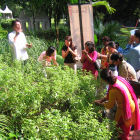


Do participate in all the activities organised for you during a field trip
Tan Shiow Chin
Staying measured — and alert
It can be difficult to remain objective when faced with friendly researchers who have given up their time to host you at their organisation. But scientists should understand that you are not there to make friends. Maintain a friendly, measured, non-accusatory tone, and you can still ask tricky or potentially embarrassing questions without antagonising your interviewee.
If that is too difficult, you could wait until the end of the trip to ask such questions, or email them to the appropriate people after the visit. It's courteous to give your hosts time to respond to difficult questions, and helps maintain a friendly and open atmosphere while you are with them, but it does risk receiving prepared — and therefore possibly more guarded — answers.
Being observant is crucial here. While you're on the lookout for colourful details and new avenues, remember that everyone always wants to show their best side to the media, but it might not always be accurate.
Try to look below the surface, and see the real situation. Have casual conversations with the people you meet and see what they think about their work and workplace. Analyse the statistics given to you and look carefully at any information to see if it might have been 'massaged' or manipulated to look better than it should.
But don't purposely dig for dirt or scandals, or look to sensationalise your story. Simply ensure accuracy and make sure you're not looking through rose-tinted glasses.
Back home
Once you're back in the office, it's a good idea to follow up with an email to any researchers who were particularly helpful during your visit — they may well turn out to be useful future contacts. And share the information you have gathered with your colleagues. Even one day out of the office can yield a huge amount of material.
In summary, lab visits are great opportunities to broaden your scientific — and journalistic — horizons. With good preparation, the right equipment and an inquisitive mind, you can get not only great stories on the day, but contacts and knowledge with mileage for the future.
Tan Shiow Chin is a Malaysian health journalist with eight years' experience of going out on field trips, whether to local hospitals, international research centres or rural communities.


